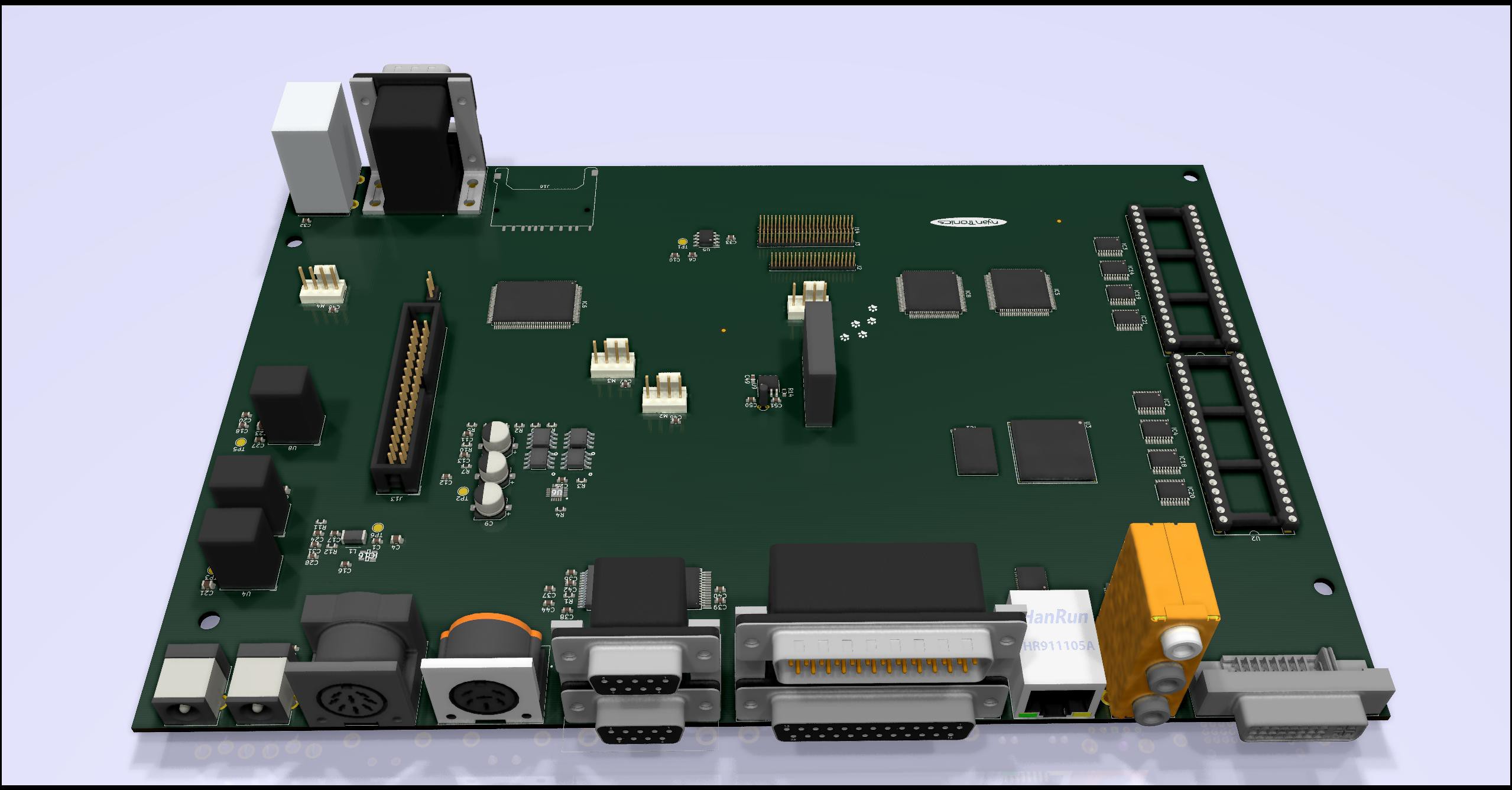As they say, the best way to do a project is to head into it with overflowing amounts of enthusiasm and a vague inkling of how all the bits and pieces will actually fit together. Or maybe that was actually about how not to start a project. Regardless, after many hours of bashing away at the Tomodachi X2 project, something resembling an actual product is beginning to emerge, like a beautifully refined sculpture being carved from a shapeless piece of rock.
At the onset of the project it wasn't quite clear which compatibility modes would be added. This has now been solidified into the Commodore 128 and MSX2+. The former also gets one Commodore 64 and CP/M mode. The latter gets one the whole range of MSX systems, barring the MSX TurboR, which uses a different processor altogether.
Biggest progress on the physical system has been the work on the schematic and PCB layout, which has led to the current 250x170 mm board and its connectors:

This connector layout has been selected to merge both the connectors for the RISC-V system and the Super-IO chip, as well as those of the Commodore 128 and MSX2+. The latter will have to use the C128's tape drive and the Super-IO's printer port via a bridge in the chipset to make them compatible. This means that physical MSX tape drives and printers are not directly supported, but would require external hardware to convert the signalling to the appropriate format for those devices.
These decisions were mostly made to support the most commonly available hardware, and to limit the number of physical connectors on the board. Even at its current size it's already a fairly expensive board to have produced.
Alice chipset
The Alice chipset now features at its core a RISC-V processor, which forms part of the native TX2 mode. It coordinates the configuration of the system, and allows the other modes to be enabled. This part of the system is currently being prototyped on an FPGA development board, with the external processors, Super-IO chip and further hardware being added as needed on breakout boards. This approach should hopefully speed up development.
Custom enclosure
With abandoning the mini-ITX form factor and going for a custom form factor, this meant that while existing cases could not be used any more, we could however design a case that is specific for the TX2 system. This offers quite a lot of possibilities.
Later this month we hope to get some preliminary renders of this case online, to give an impression of what one might expect.
 Maya Posch
Maya Posch
Discussions
Become a Hackaday.io Member
Create an account to leave a comment. Already have an account? Log In.